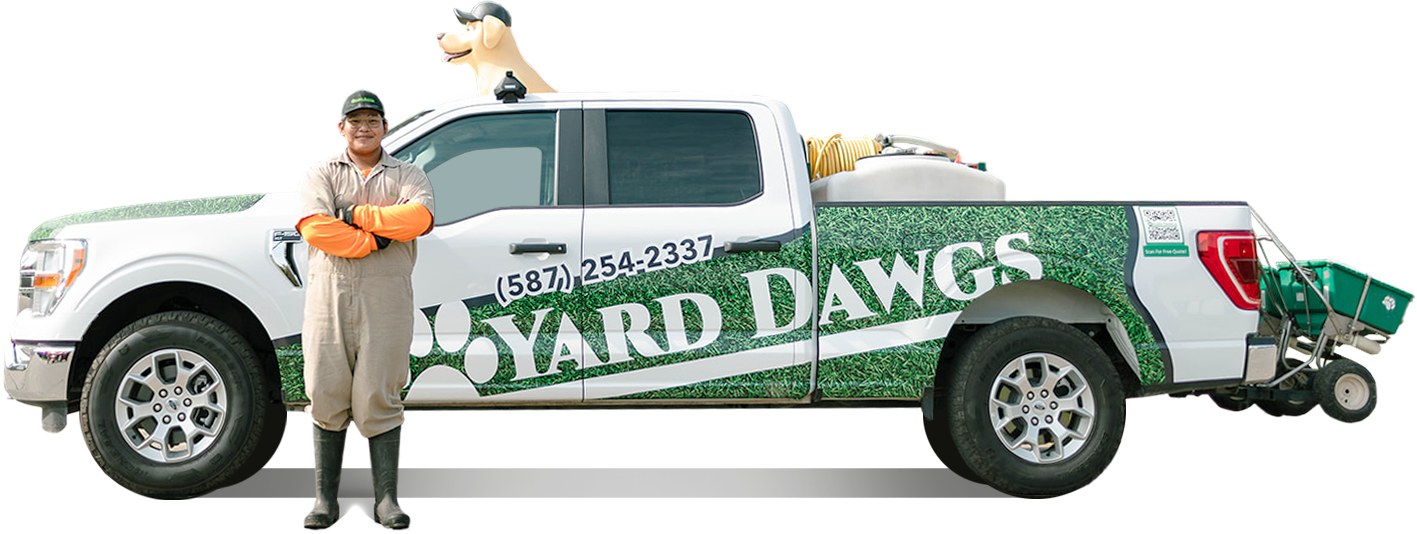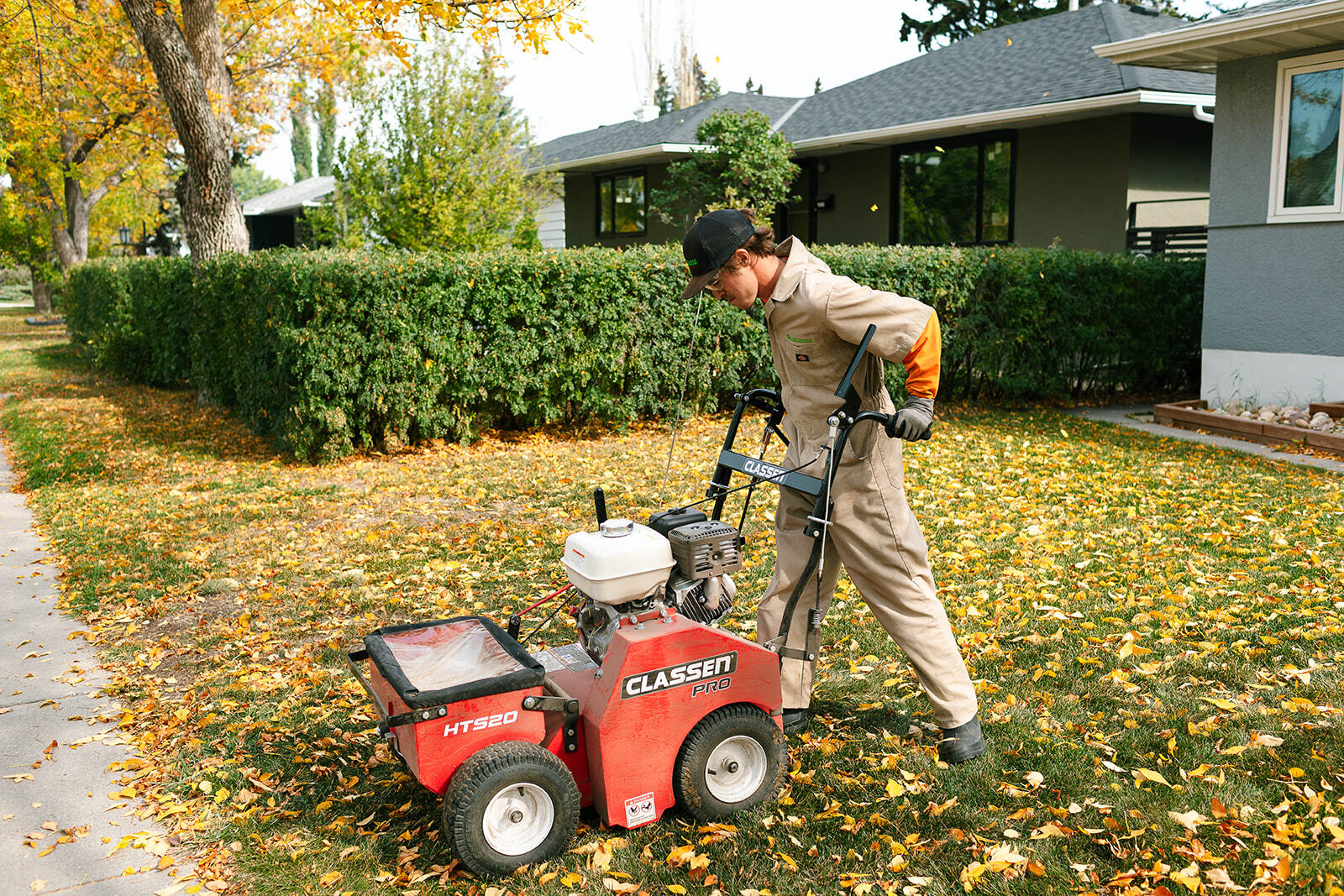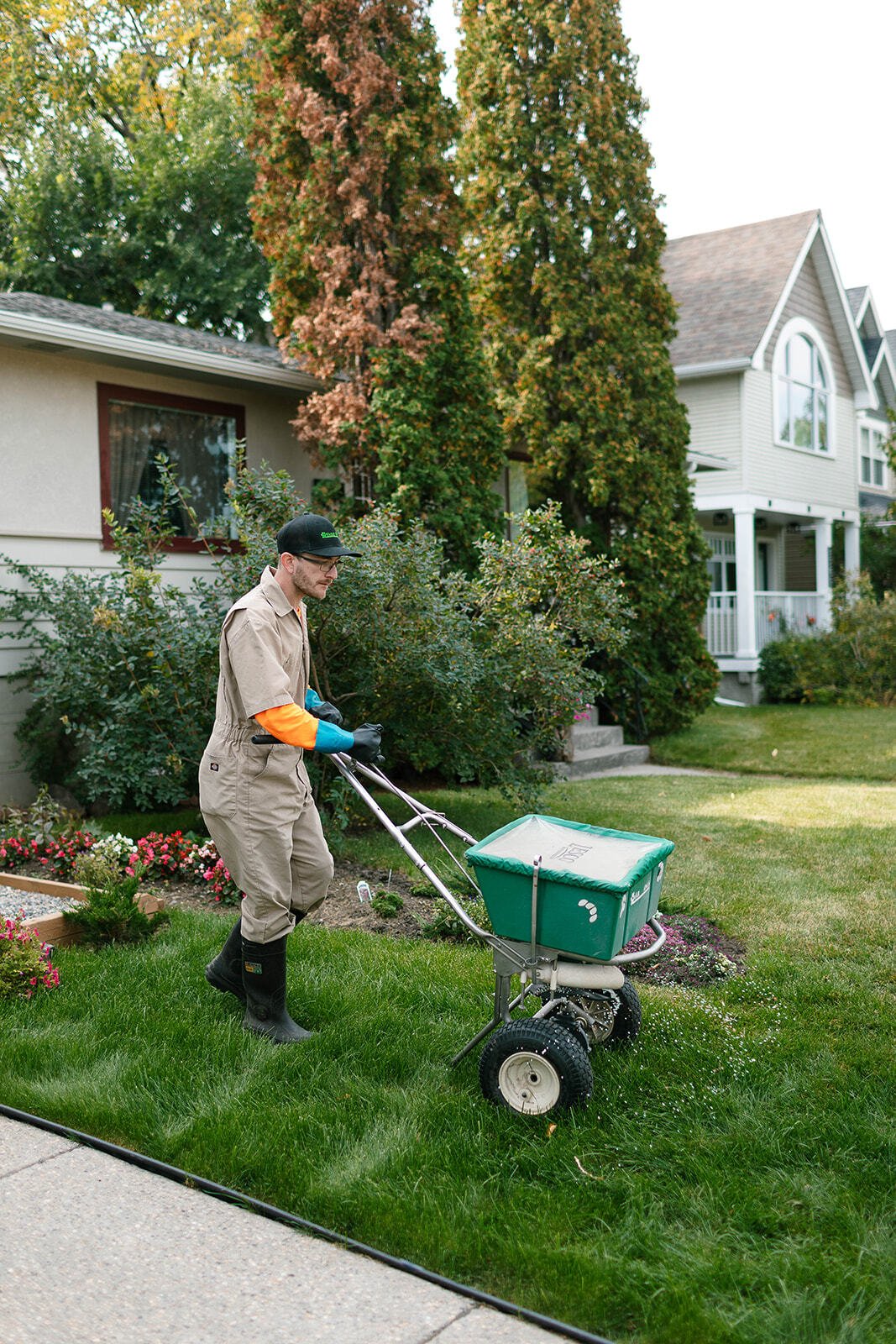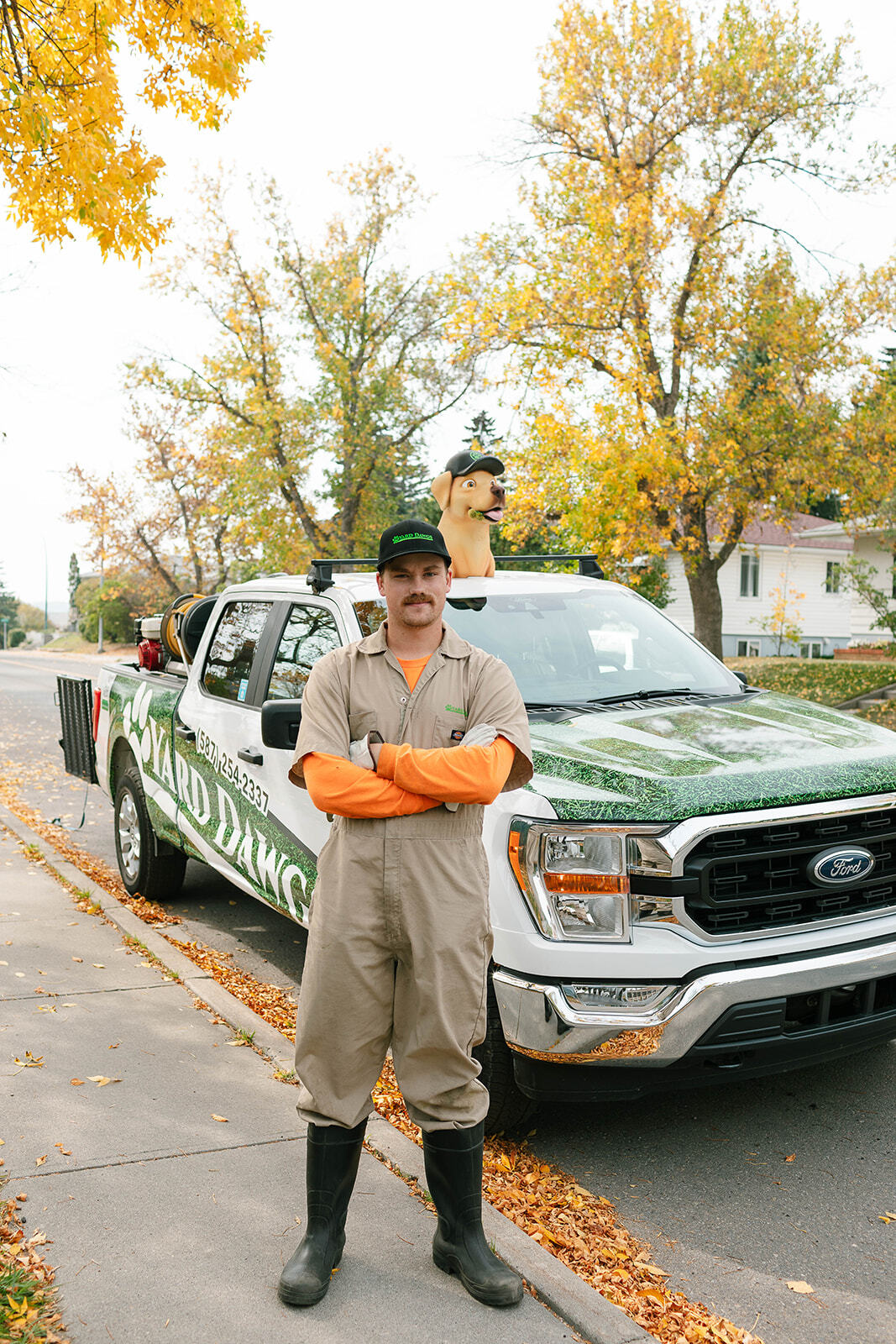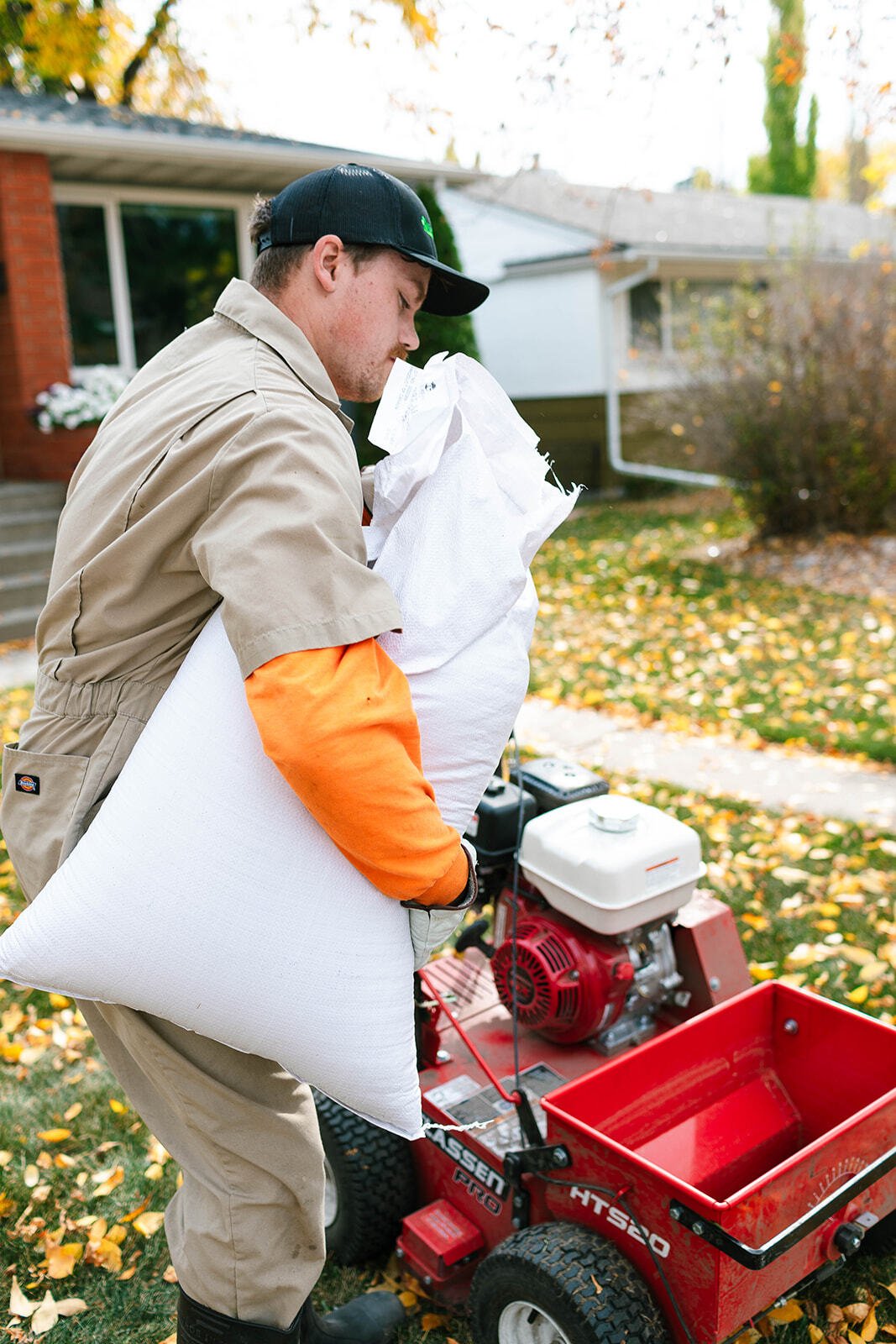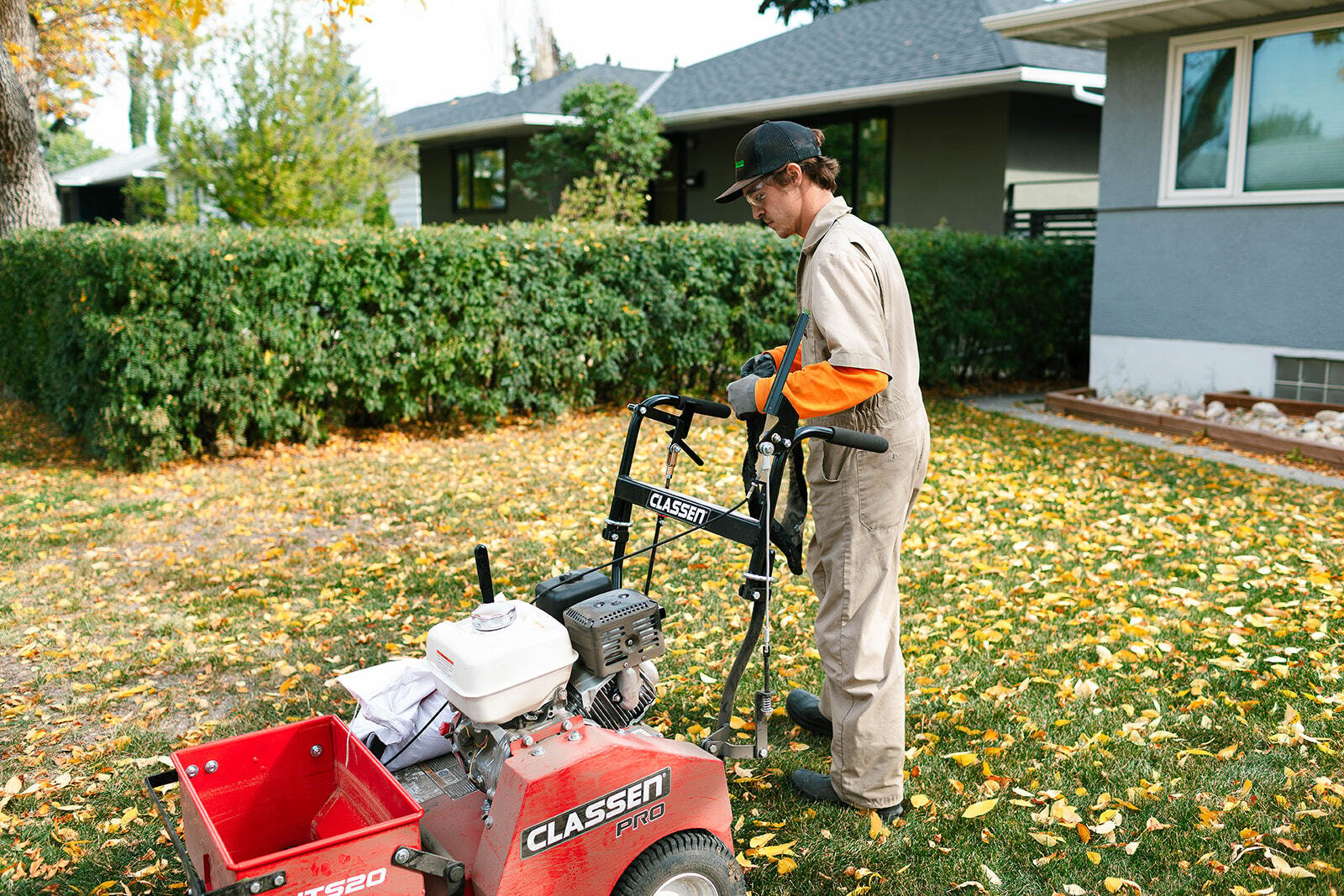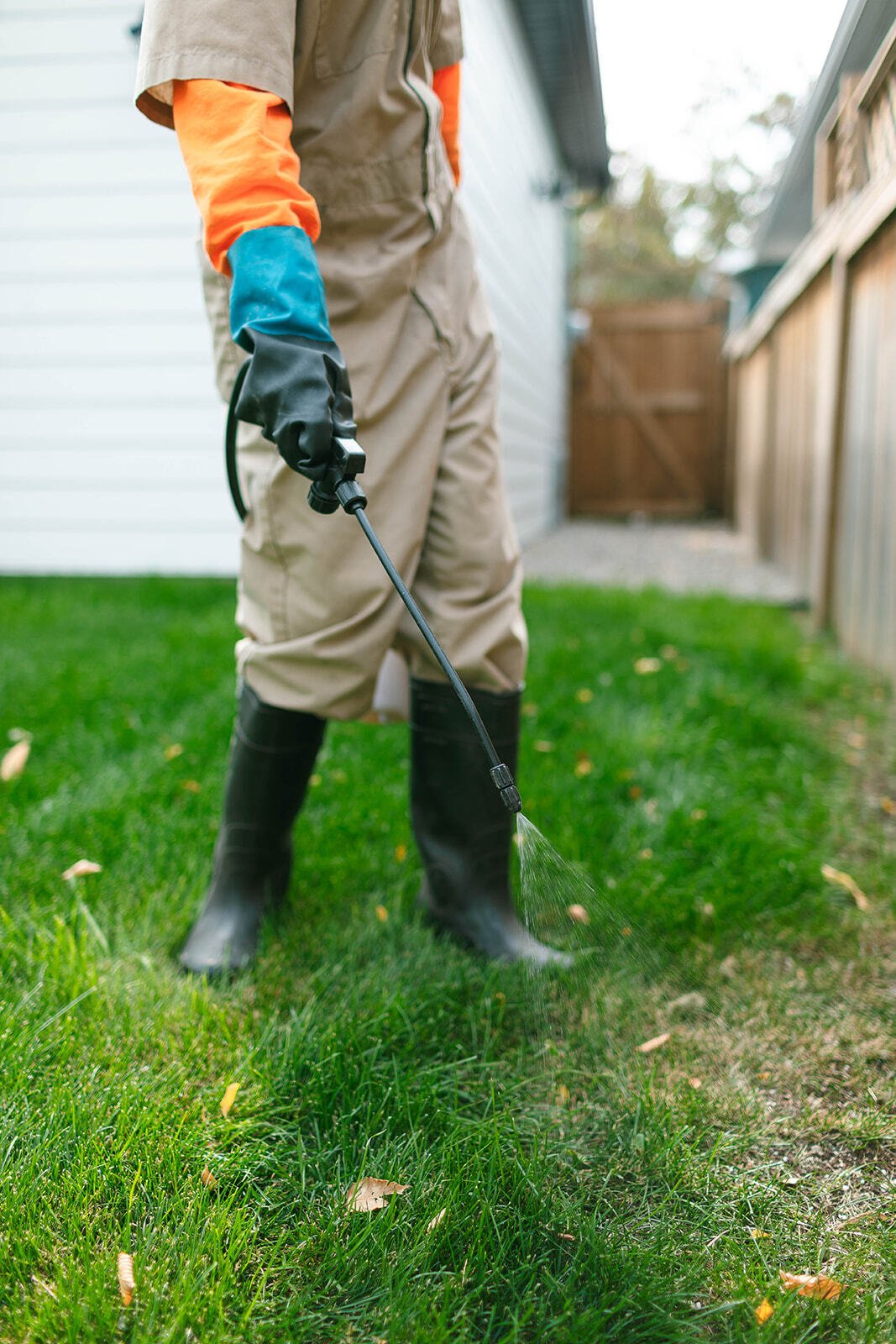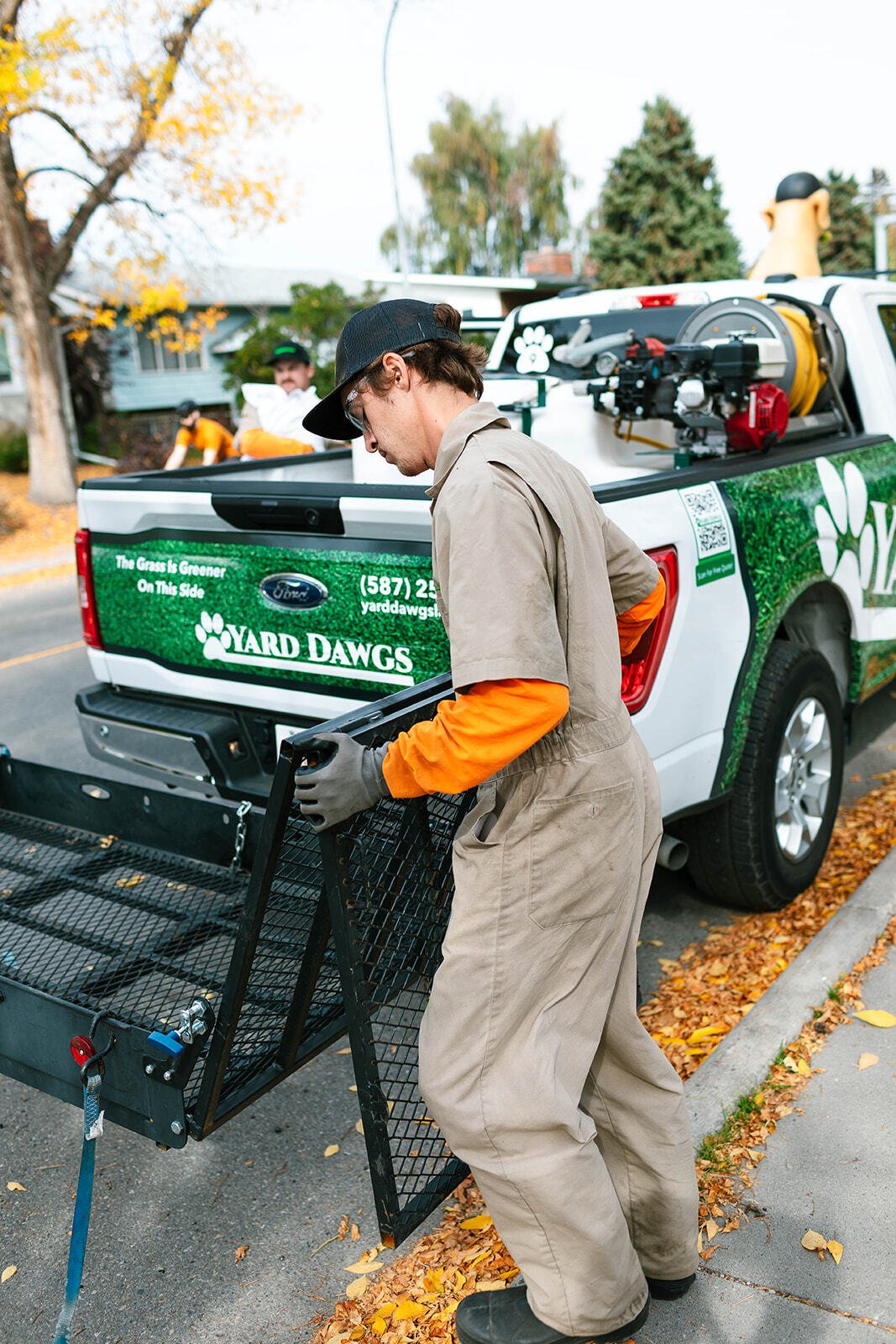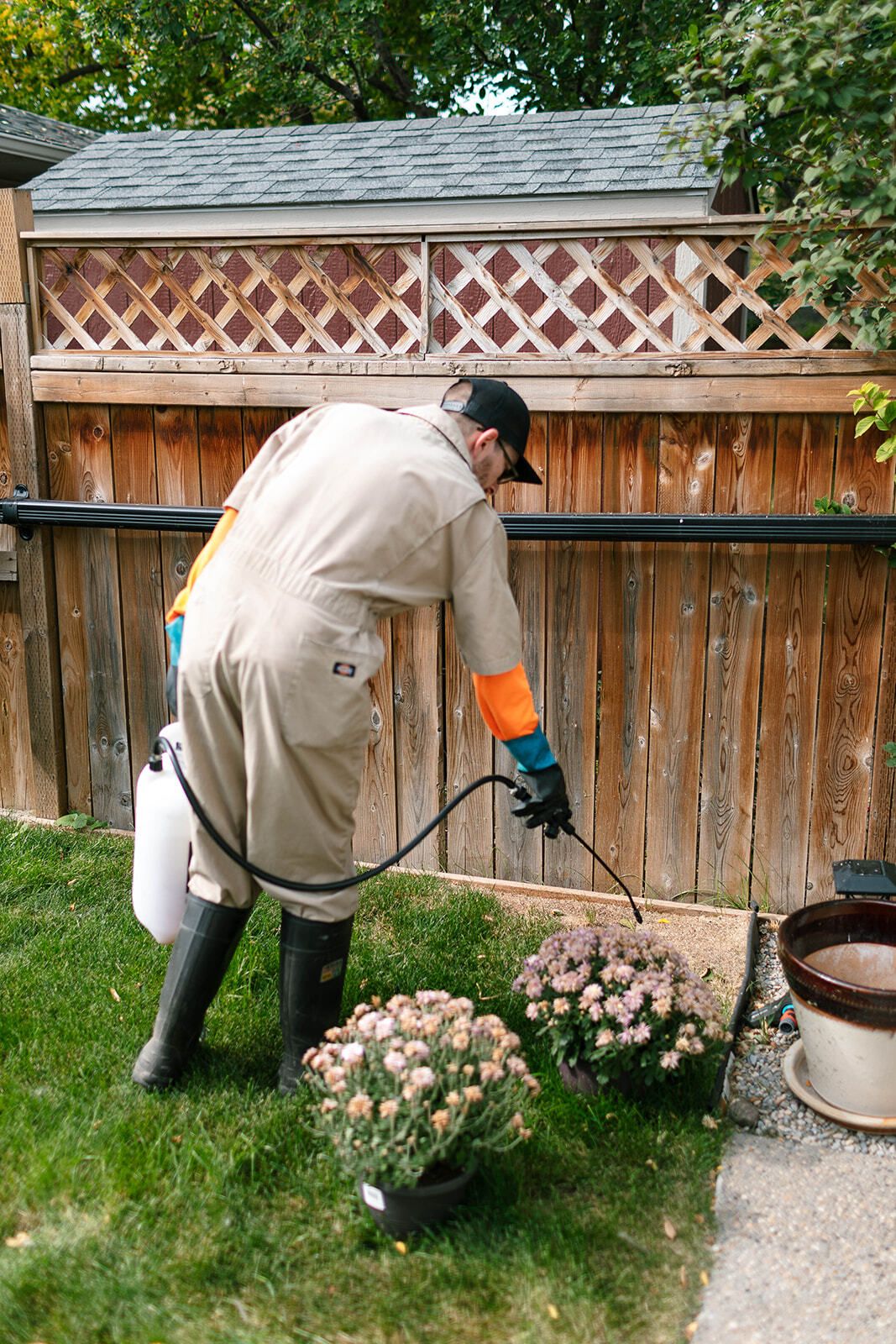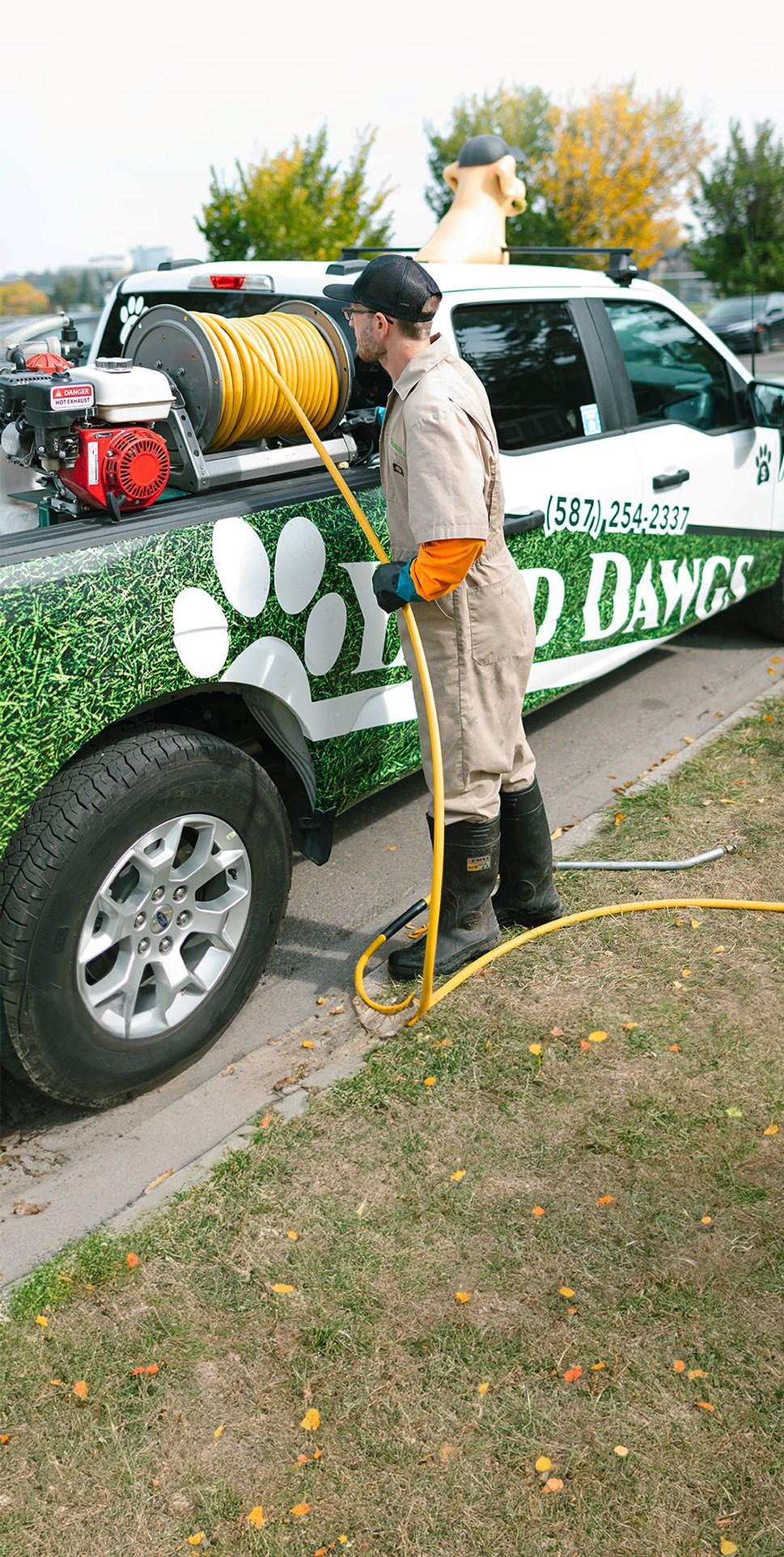Seeding your lawn is important because, regardless of how much time you spend in your yard, your lawn is bound to thin and brown as it ages. One of the best ways to re-vitalize your lawn is by overseeding. Overseeding repairs the bare spots in your grass, and when your grass is full and healthy, weeds find it harder to grow. As well, a green lawn looks better and feels better. So, we’ve established the advantage that seeding gives you as a homeowner, now we’ll go over how to repair your lawn and the instructions you should follow thereafter.

How To Seed
- Rake the patch of dead grass or dirt you plan to seed. The purpose of this is to remove any loose or dead grass
- Spread a fine layer of soil about 1-centimeter in depth
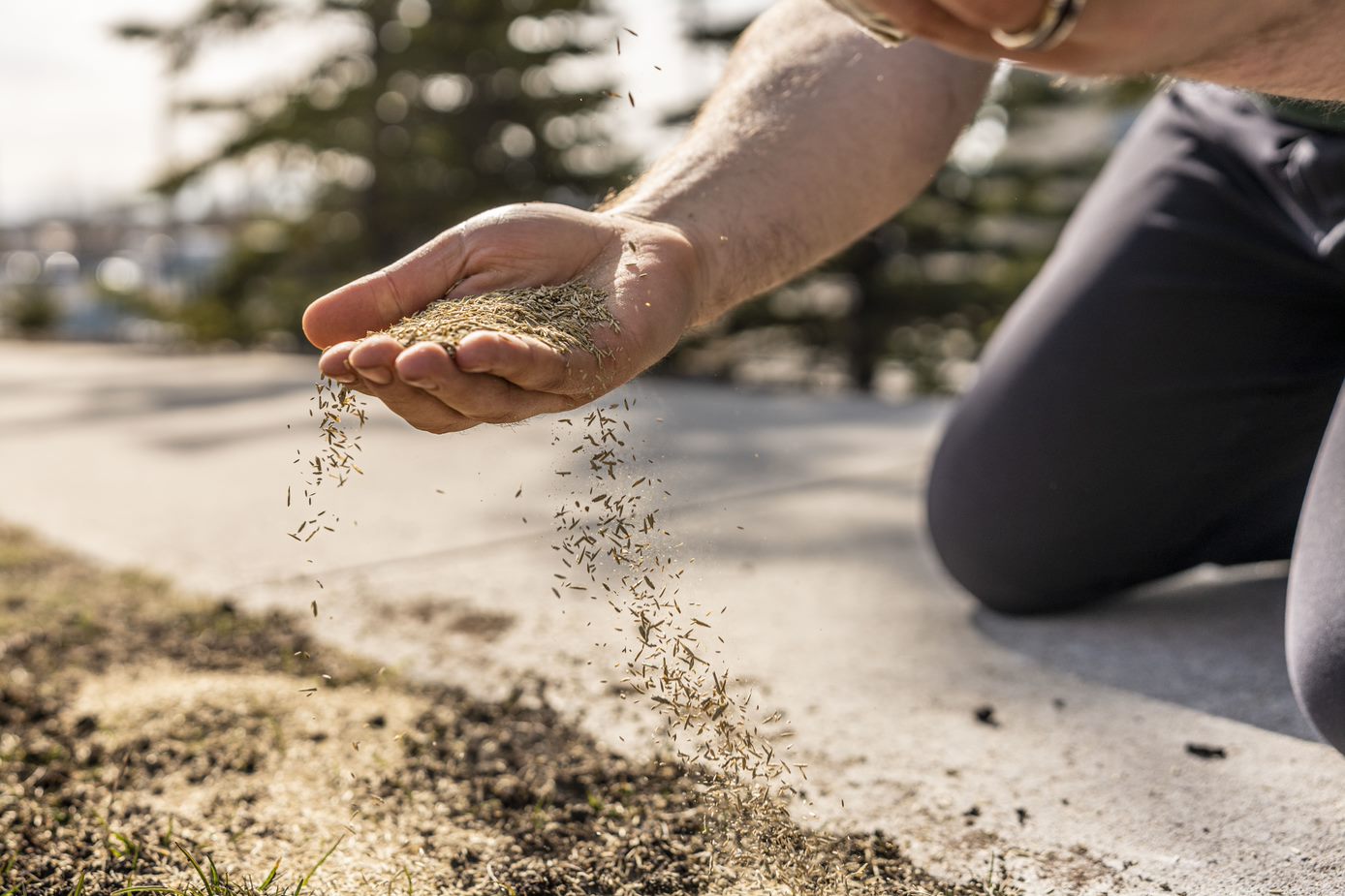
- Generously sprinkle on the grass seed, being sure to distribute it evenly over the area
- Rake it slightly to secure the seed, but don’t fully bury it
.png?width=725&name=Blog%20(8).png)
- With your hand, pat down the soil in that area. The reason behind this is for more soil to seed contact
.png?width=725&name=Blog%20(7).png)
- Lastly, sprinkle a bit more soil on top of that area (lightly)
*All materials for your overseeding project are linked at the end of the blog
For More In-Depth Instructions Into Overseeding:

At this point you’ve set up the stage for your lawn to successfully recover. You’ve essentially given your grass a bit of nurturing, but the key to ensuring your grass grows full and healthy, is continued maintenance.
Overseeding Aftercare
If The Seed Dries It Dies!
Watering your grass regularly after seeding the bare patches is crucial. The trick is to keep the seed moist for the first 2 to 3 weeks until you begin to see seed germinations, a.k.a. grass growth. So, to start, water your lawn for 10 minutes in the morning and 10 minutes at night. This can be done with either a handheld nozzle or a spot sprinkler.
Once the seed has started to grow, we recommend 10 minutes of watering per day or 1-inch of water per week. The way to test how much you are watering is as follows:
-
Place a frisbee upside down on your lawn, water until it fills the frisbee to the halfway point (about ½ an inch)
-
If you practice doing this twice a week, your lawn will receive about an inch of water
Additionally, if there is a heat wave during the time your seed is beginning to germinate, increase the frequency of watering to 3 to 4 times per day. You want the top inch of your soil to stay moist. However, if it’s raining don’t bother watering. If you over water your lawn, you could displace the seed and overload them. After overseeding, you should have moist soil, but not a mud puddle. Consistency and commitment is key! If you follow these instructions diligently, your lawn is sure to return to peak performance.
Mowing (And Other) Precautions After Seeding
If It Ain't In The Soil It's Going To Spoil
If the seed has not fully germinated or does not look like the rest of your lawn, do NOT mow over these areas. The lawn mower will suck up any loose seed and prematurely cut the grass. To be safe, don’t mow over these patches for about a month. When you do mow the newly planted grass, make sure your mower blades are nice and sharp and only cut the grass when it’s dry.
Until the grass has fully matured keep your pets off those areas. You don’t want your dog running through and disrupting the seed before it germinates! It will take about three weeks for you to see your grass growing in those areas. Just as your dogs should be avoiding those areas, so should you. If you are walking through these patches, this will also do harm to the lawn’s re-growth. So, until it’s time to mow these patches, you shouldn’t be walking on them.
As well, fertilizing these patches is not necessary because all our programs come with unlimited fertilization. In addition to any unnecessary fertilization, aerating these patches before the grass has matured would be detrimental to the overall growth. Aerating would disrupt the seed’s development and move the seed from bare patches to different places in the lawn. Following these precautions will ensure your lawns best chance of survival and maximize germination..png?width=725&name=Blog%20(1).png)
What Seed Are You Sprinkling On Your Lawn?
In Alberta, and Canada in general, the grass you see on your lawn, your neighbour’s, and your neighbour’s neighbour’s lawn qualifies as a cool season grass. Cool-season grass stays green until the temperatures drop below freezing and then go dormant in the winter and fall. Seed blends are designed for different locations, and many experts recommend blended seed for best results. Some blends are designed for shade, some for high traffic areas, and so on. Our seed bags are entirely unique to Yard Dawgs.
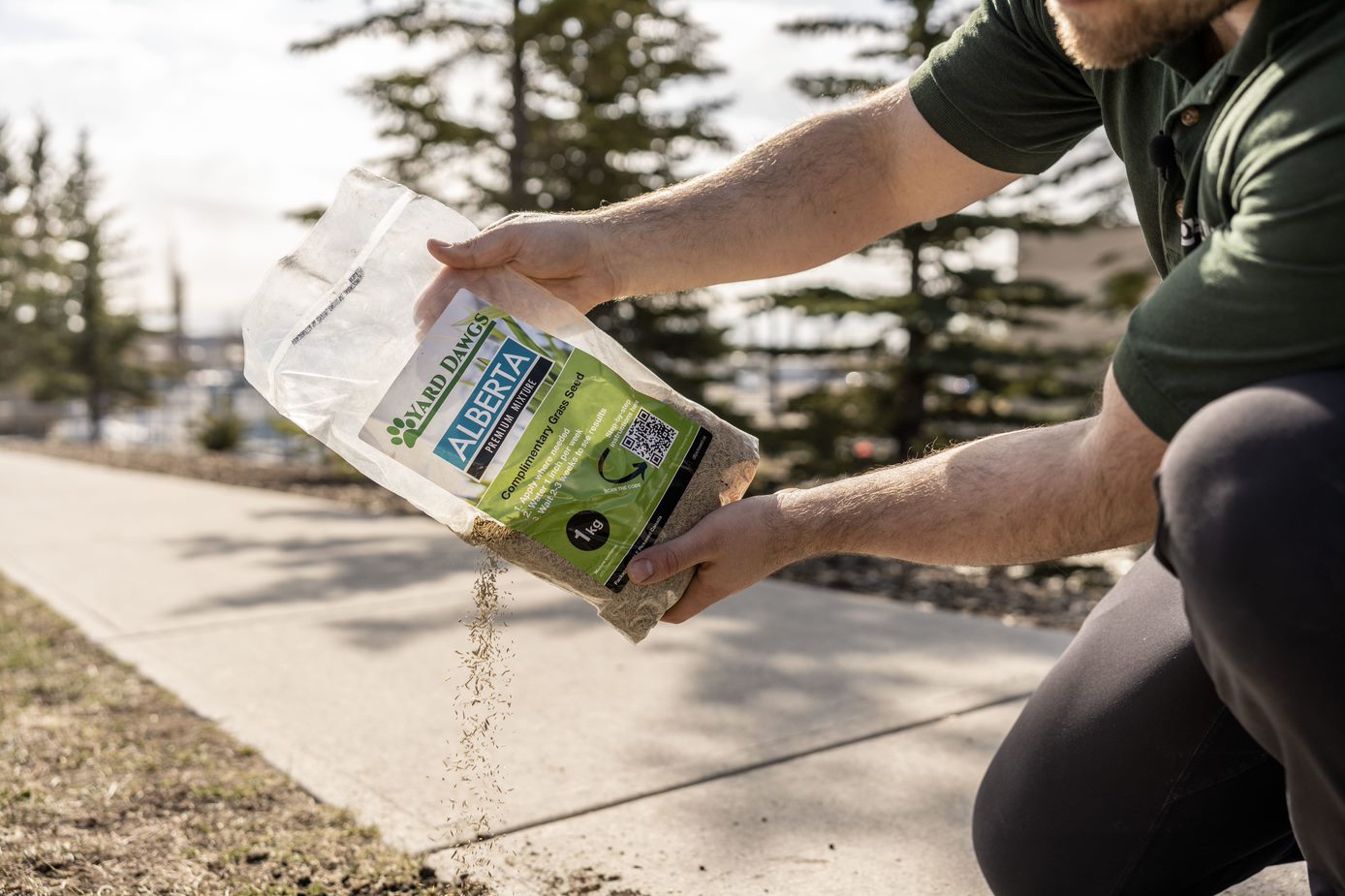
The blend primarily contains Kentucky Blue Grass, mixed with Fiesta Rye Grass and Red Fescue. We’ve invested in seed that has the technology to work throughout Calgary’s weather. Meaning it maximizes water absorption and is resistant to drought and disease.
Benefits Of Overseeding Summary
A naturally thick and healthy lawn is the best defense against weeds, so taking care of those bare patches is vital. Not only do you want a healthy lawn, but you’re defending your grass against weeds taking up residence in your yard. It can’t be emphasized enough; your newly seeded grass needs water. Do not neglect your daily watering schedule. Sun and wind can quickly suck up the moisture from the soil. Remember: if it dries, it dies. Your overseeding journey will go well if you follow these simple instructions, continue with regular care and maintenance after the seed has been spread, and treat it with care until the grass has fully germinated in those areas.
Once your lawn begins it’s return, and you start to notice thick and healthy grass sprouting throughout your front and back yard, be sure to get outside and take advantage of the sun. Invite friends over for a dinner party on your fresh grass, reap the rewards of your labour.
Items Have Been Linked Here For Your Convenience:
- Viola Lawn Soil
- Spot Sprinkler
- Rectangular Sprinkler
- Metal Rake
- Hose


